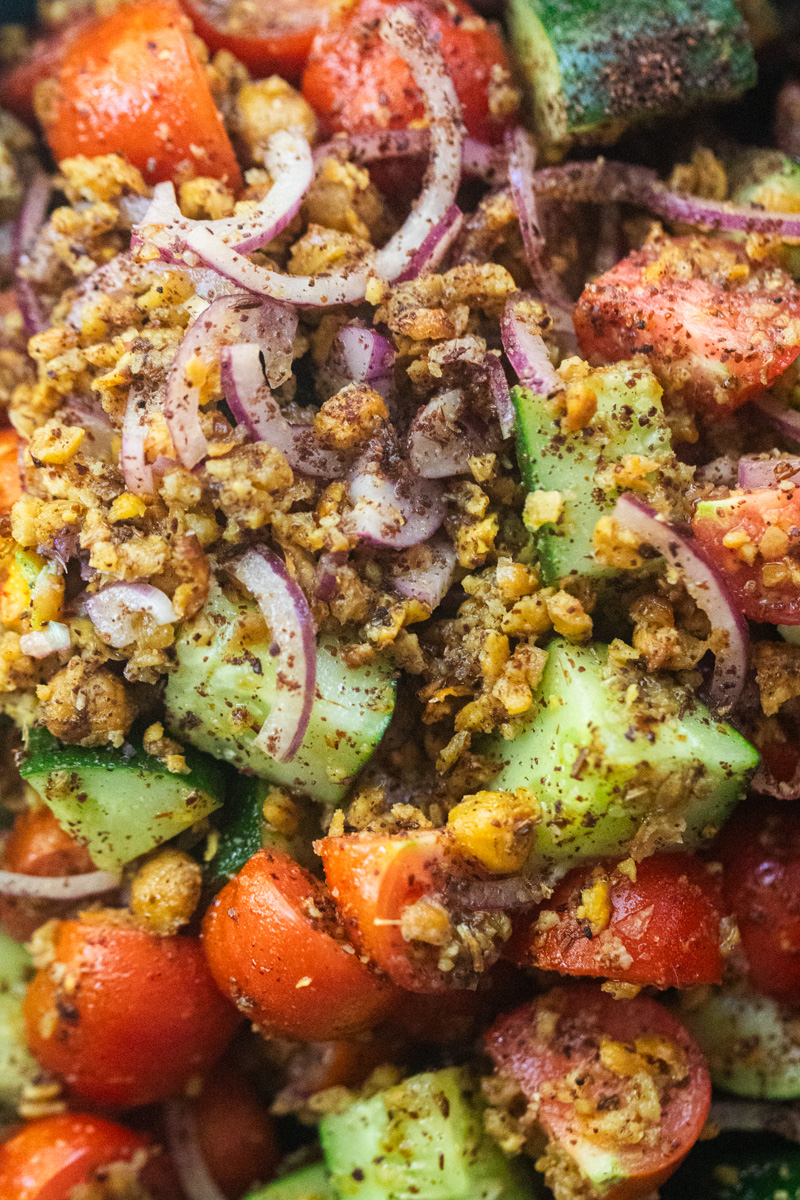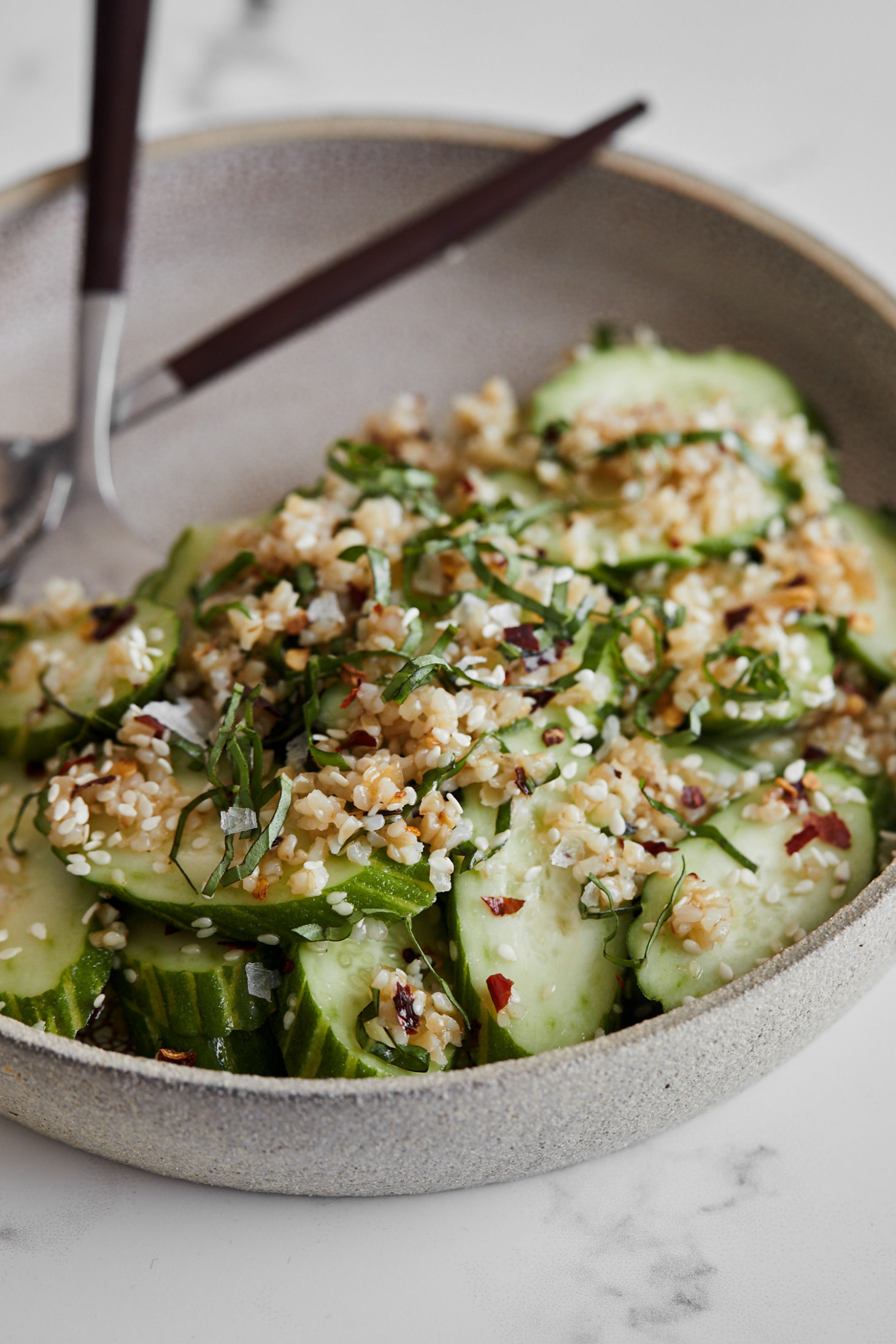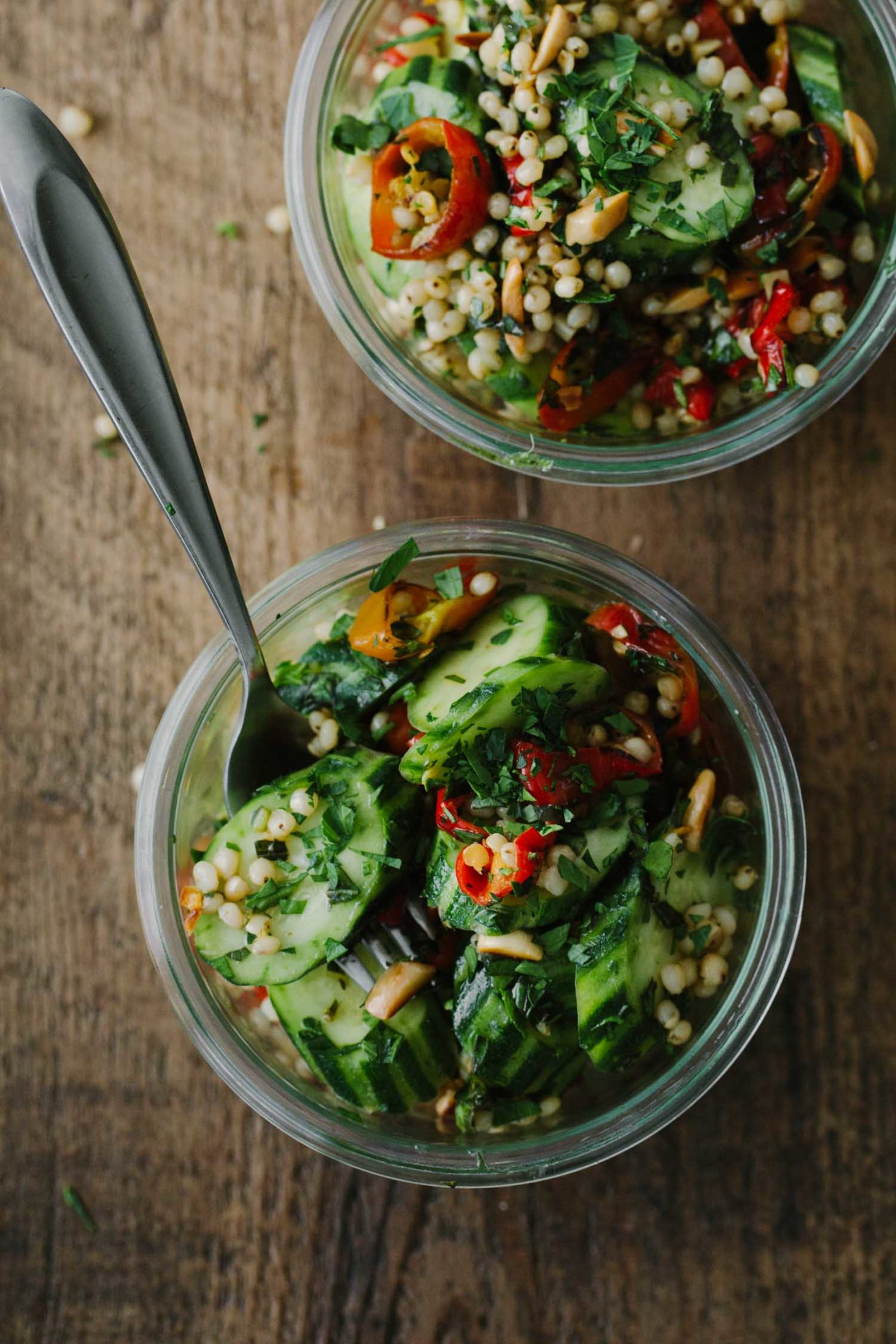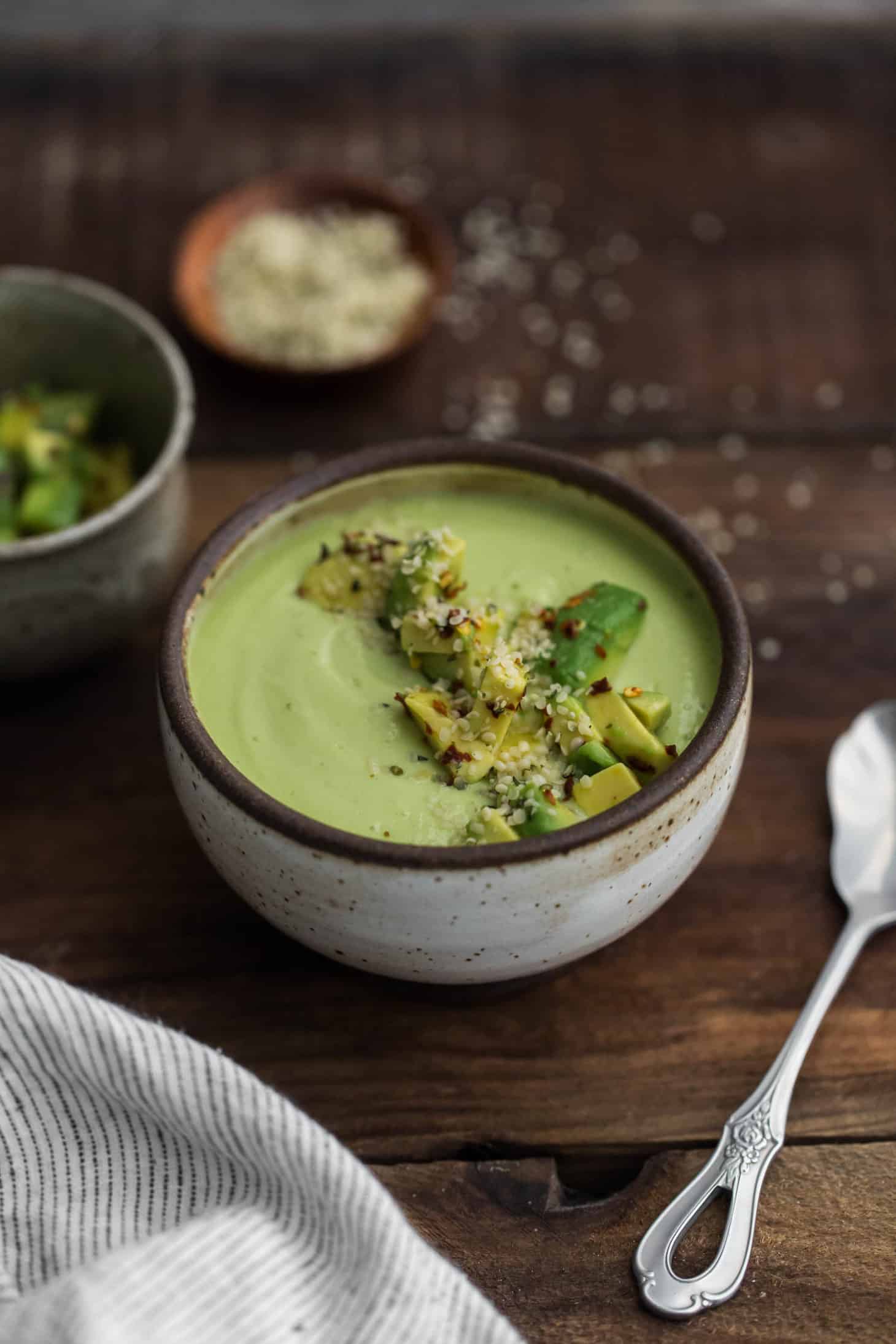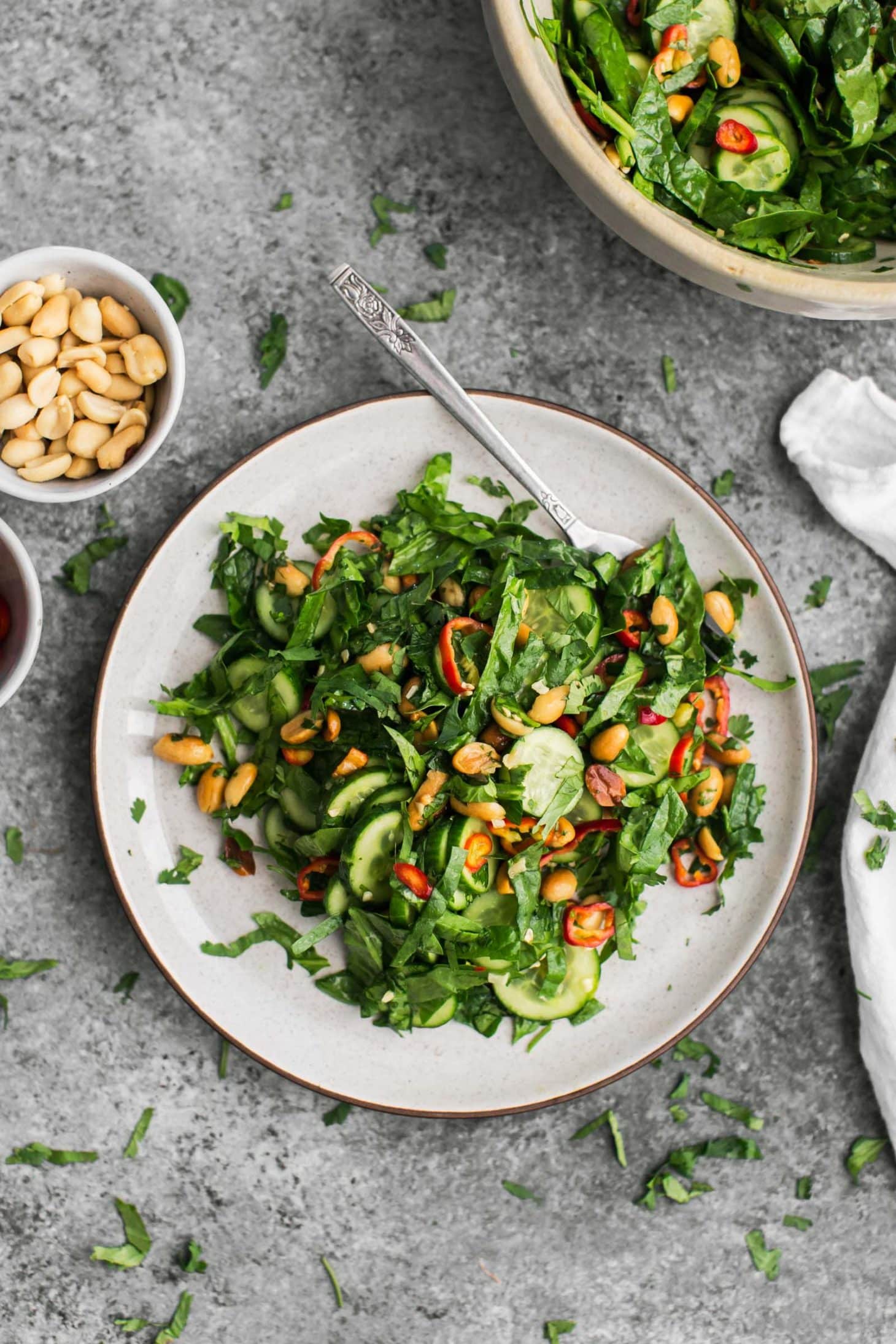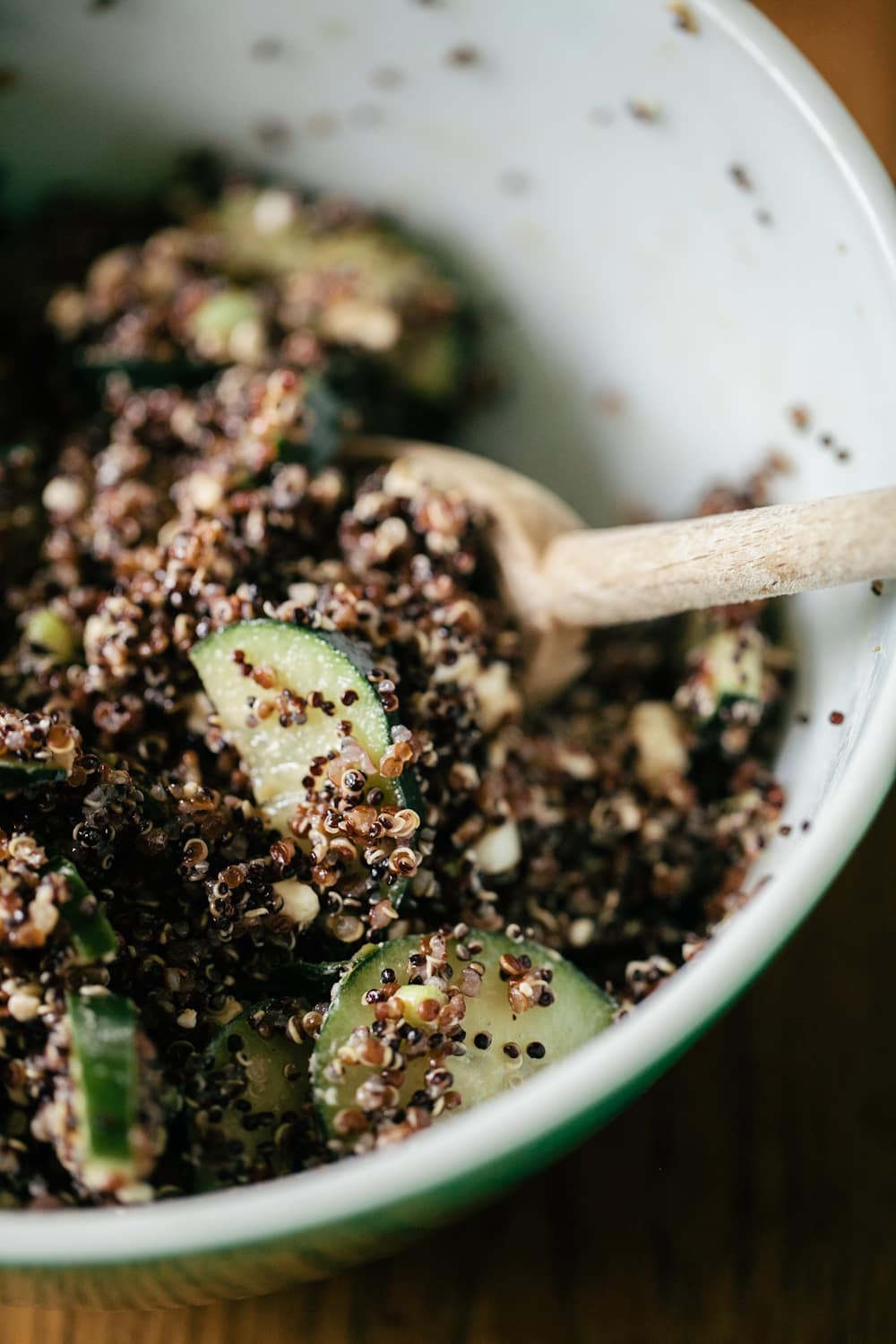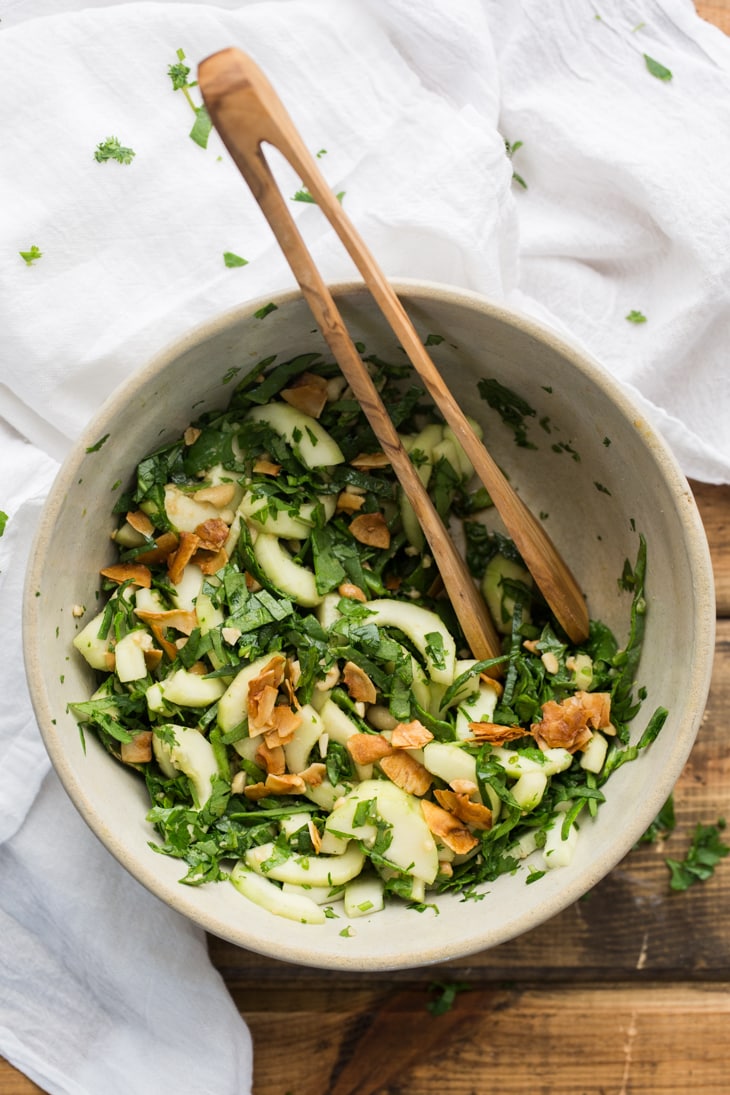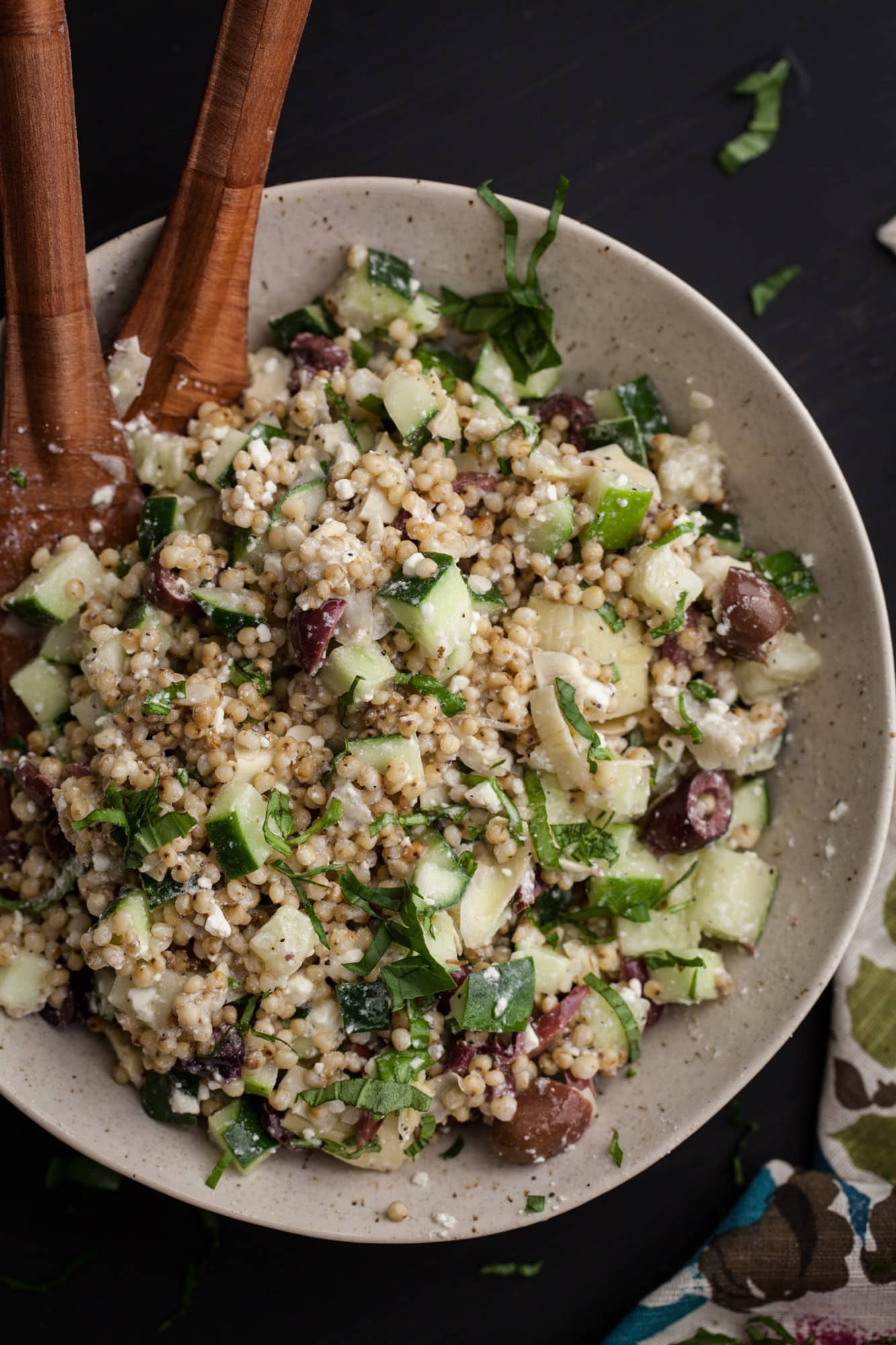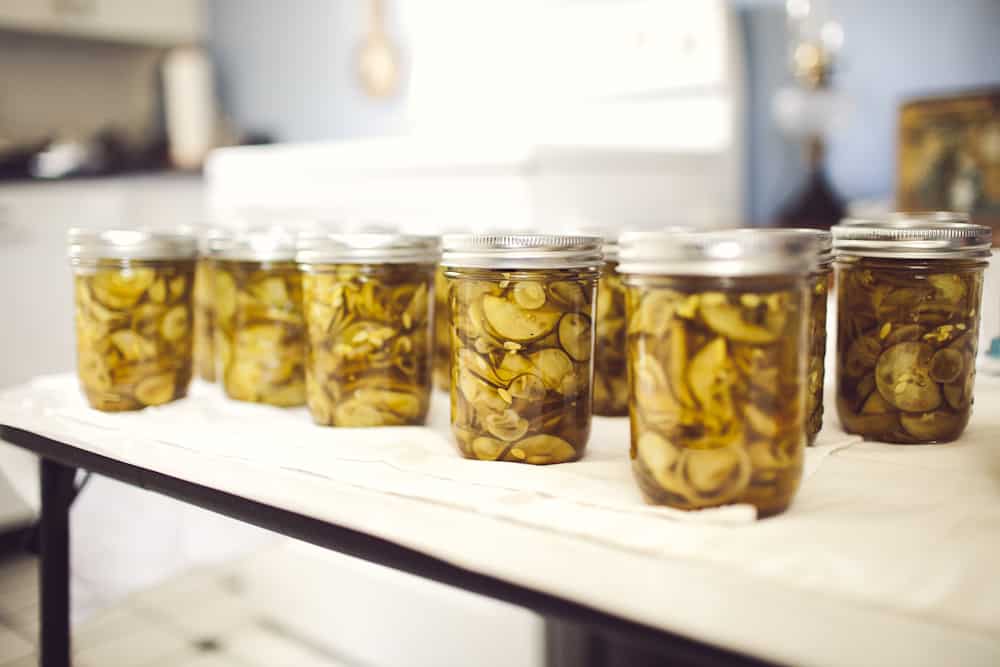
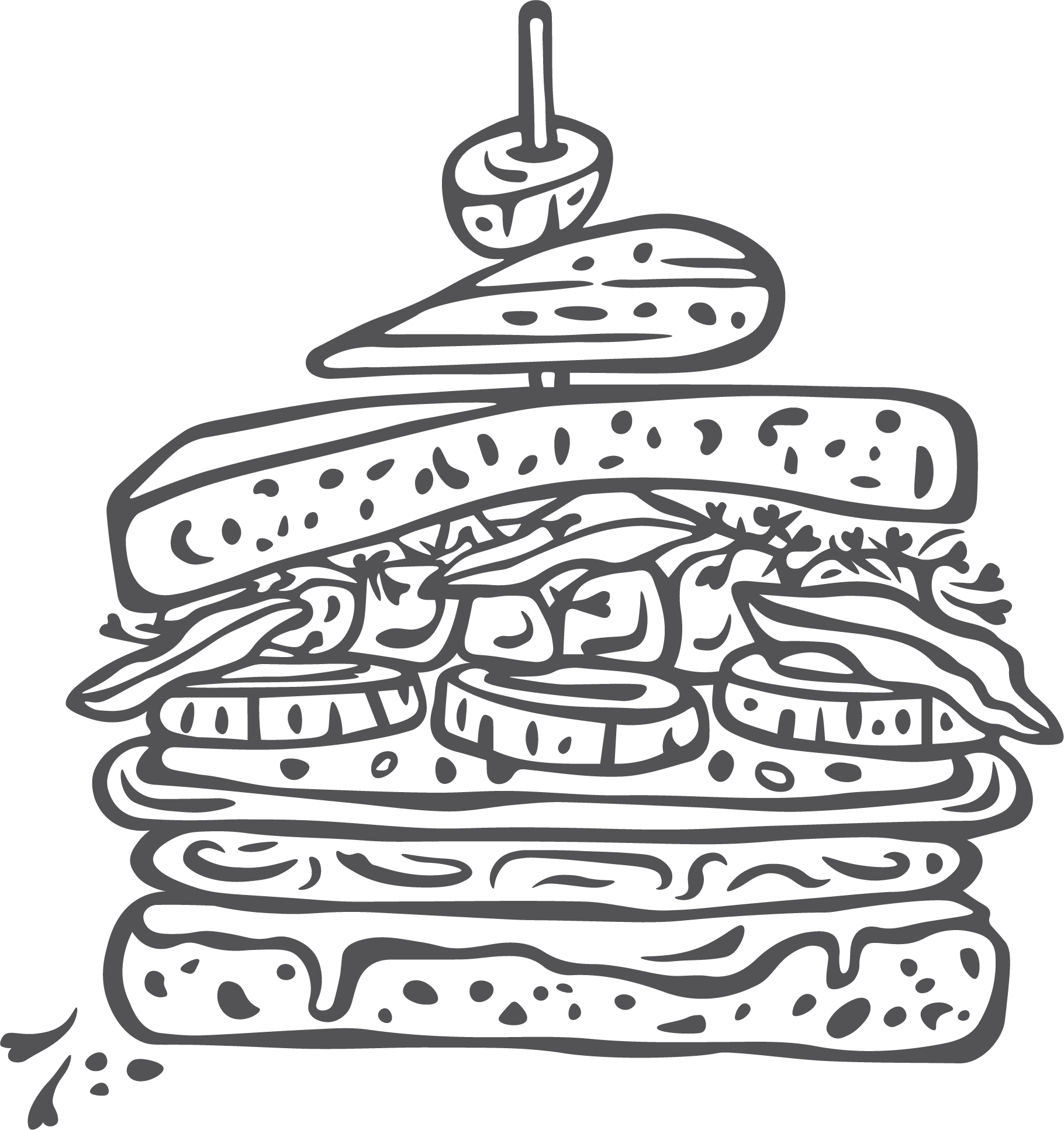
Cucumbers are a funny bunch. There are many varieties, each with different characteristics but all wonderful for beating the summer heat. Botanically, cucumbers are a fruit related to melons, but primarily used as a vegetable.
Cucumbers come in three classifications: slicing, burpless, and pickling. The burpless varieties are my favorite, primarily for their thin skin and slightly sweeter flavor. They’re named aptly for easier digestion (and less burps). These include the Armenian, English, and Persian. Cucumbers of all varieties can range in size from a few inches (pickling), upwards of a couple feet (English).
I rarely grab the traditional cucumber, but it’s great for salads even though the skin tends to be a bit tougher. Most frequently, I’m making pickles, which means I’m using the pickling cucumbers. They have a nice crunch that holds up to the pickling brine.
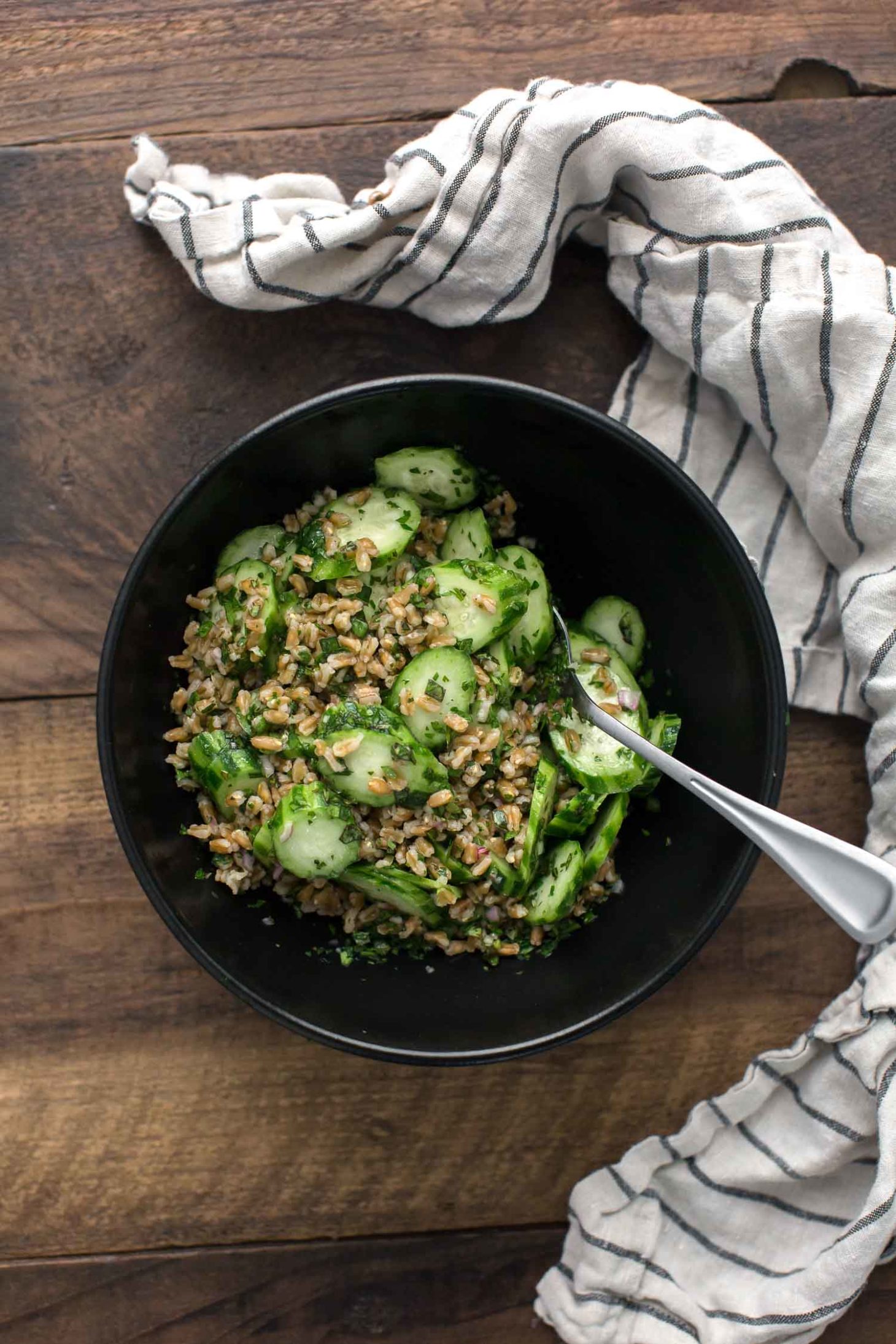
Summer/Early Fall
Nearly every time I cook with cucumbers, I use them raw or pickled. However, cucumbers can be roasted, braised, or sautéed - just don’t overcook them.
Also, one of my favorite tips from Deborah Madison: if you have mature, bitter cucumbers, cut off the ends and rub with salt. This helps pull out some of the bitterness.
Look for cucumbers that are free of blemishes and soft spots. Cucumbers should have weight to them, and feel crisp/firm when pressed. Wrinkling at the ends is an indication of old age. Traditional cucumbers should be solid green color with no yellow spots.
If buying from the store, look for cucumbers that have not been waxed. If waxed cucumbers are all your can find, peel before using.
Over the years, I’ve found I like to keep my cucumbers on the counter and use within a couple of days. Cucumbers hate cold and it’s easy to ruin a perfectly ripe cucumber in the refrigerator.
Armenian
English (hothouse/telegraph)
Lemon
Persian
Pickling
Common/Garden

